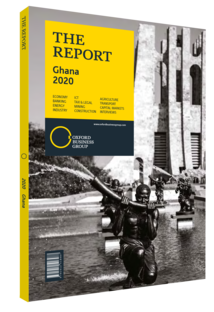Richard Dombo, CEO, Ghana Railway Development Authority (GRDA): Interview

Interview: Richard Dombo
How would you characterise the ongoing progress of the Railway Master Plan (RMP)?
RICHARD DOMBO: The current Ghana railway system was constructed by British colonial authorities to enable access to mineral resources. As a result, the line is predominantly coastal, only extending some 360 km inland from Accra toward the Ashanti Region. Thus, the 2013 RMP aimed to create connections across the rest of the country. Targets included linking all regional capitals and ultimately connecting Ghana with neighbouring countries. This plan adds 4004 km to the country’s rail line, for a projected cost of $23bn.
Of the RMP’s six phases, the first concerns the rehabilitation of the existing, narrow-gauge line, with the succeeding phases including plans to construct several standard-gauge railways. This enables a higher axle load, capability and speed to maximise output and haulage potential. Phases two through six are not sequential, and will be completed according to the availability of financing and bidders. Rehabilitation is progressing at considerable pace: we have completed the Accra-Tema line, and the Takoradi-Twarkwa line is in development. While development is ongoing, the GRDA has commissioned a review of the RMP.
What steps is the GRDA taking to adapt the RMP to the country’s evolving needs?
DOMBO: We have broadened the participation of stakeholders in the review process in a number of ways. We have included several state ministries in the process, as well as interviewed and collated responses from 150 key sector players. The existing master plan is expected to be used as a skeleton for new ideas, but aligning development of the railways to other infrastructure projects will be key. The ongoing expansions at the ports in Tema and Takoradi, for instance, would be white elephant projects without corresponding railway connectivity. Thankfully, all actors are keenly aware of the dynamics and are cooperating closely with us.
Which alternative financing sources are available for expanding railway infrastructure?
DOMBO: Additional financing sourced through build-own-operate-transfer agreements, barter agreements and public-private partnerships is integral to success. For example, we have had discussions with Luxembourg’s ArcelorMittal about the right to extract iron ore from the Sheini iron mine in the north of the country to a value equal to the cost of constructing a railway between the mine and the port. This follows the model of the Sinohydro deal, whereby China will extract $2bn worth of bauxite in exchange for building $2bn worth of infrastructure. There has been considerable international appetite for rail investment: for every line we have planned, there have been several international bidders conducting feasibility studies and identifying sustainable derivable incomes from these lines.
We urge international investors to also recognise the potential for opportunities in associated infrastructure investment. We hope to farm out the building of stations to separate contractors, and we are looking to develop train stations that serve as social centres with restaurants and hotels.
Where do rail lines fit into plans to reduce urban congestion, and what else is required?
DOMBO: Accra and Kumasi are congested because they provide the majority of economic and employment opportunities. A more decentralised country would therefore aid decongestion efforts. To accomplish this, we need to make other areas more attractive. Rail connectivity will play an important role in this: the pressure on accommodation will ease if there are commuter towns connected to urban centres by a reliable and cheap railway system. We are also developing metro networks for both Accra and Kumasi. As we will be relying on private players to conduct assessments and submit bids for these projects, we do not have a timeline for the completion of these developments yet.
You have reached the limit of premium articles you can view for free.
Choose from the options below to purchase print or digital editions of our Reports. You can also purchase a website subscription giving you unlimited access to all of our Reports online for 12 months.
If you have already purchased this Report or have a website subscription, please login to continue.

